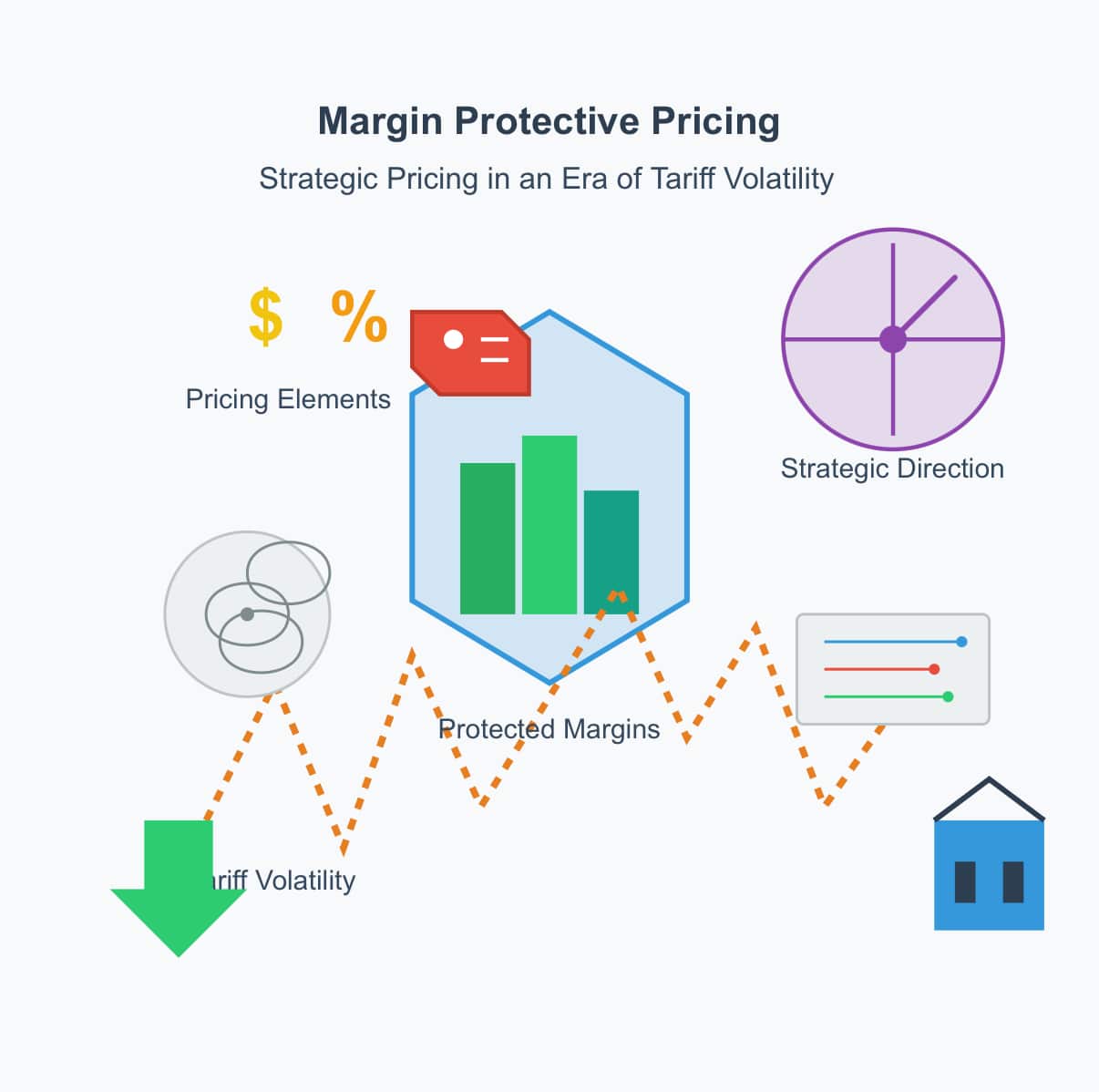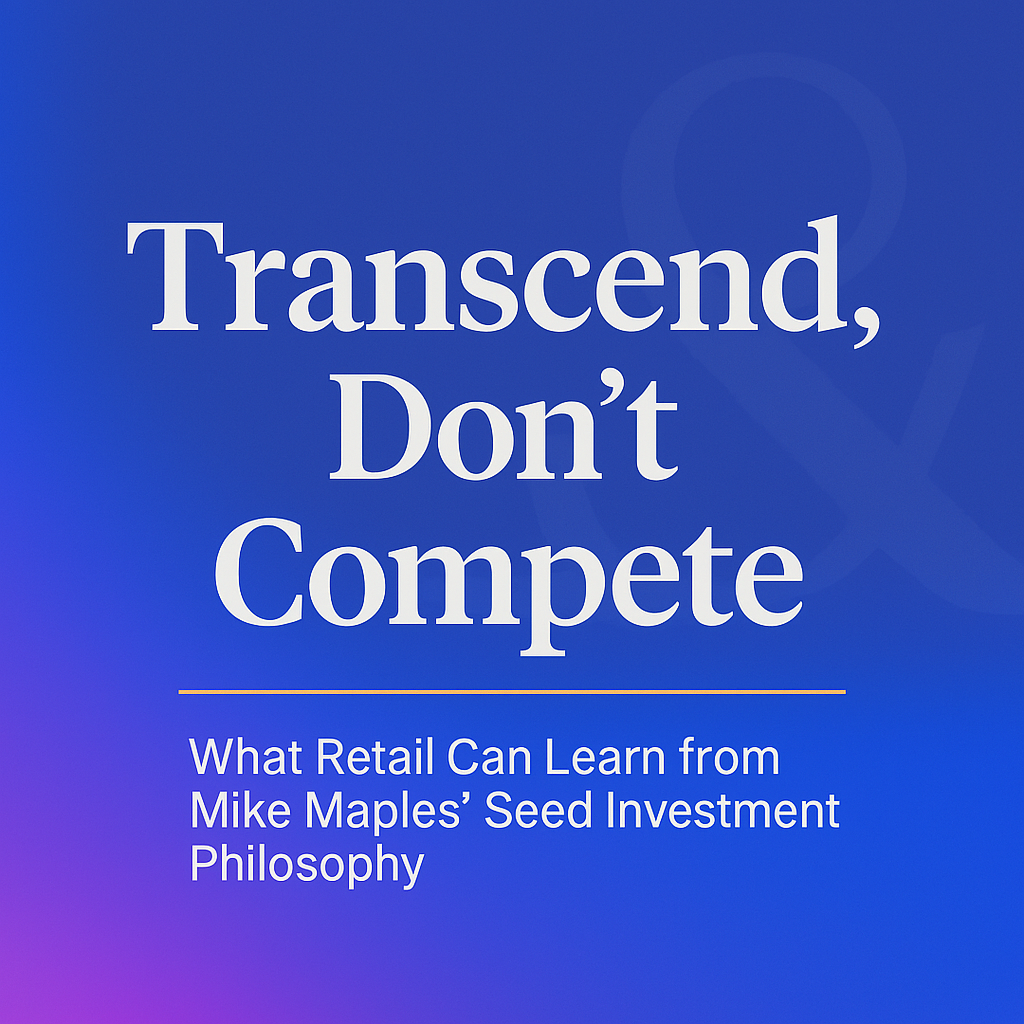Margin Protective Pricing In an Era of Tariff Volatility

Executive Summary: Pricing as a Strategic Weapon
The 2025 tariff landscape has fundamentally disrupted retail pricing strategies, with import duties of 10-25% reshaping supply chain costs. Relying on traditional cost-plus pricing is no longer viable. Brands and retailers must adopt Margin Protective Pricing, a demand-driven strategy that preserves margins while maintaining competitiveness.
Research from Bain & Company shows that strategic pricing models outperform simple cost pass-through methods during tariff changes. L.E.K. Consulting found that businesses using demand-based pricing strategies sustain higher margins and lower volume declines than those applying across-the-board price hikes.
This framework enables retailers to:
• Identify where price increases can be implemented without demand loss
• Use consumer basket insights rather than a shelf-based pricing approach
• Maintain brand loyalty by optimizing price perception
• Transform pricing from a cost-recovery tool into a competitive advantage
Consumer Psychology in a Tariff-Volatile Market
Understanding Price Sensitivity & Basket-Level Behavior
Traditional pricing strategies focus on individual product prices on the shelf. However, consumer purchase behavior is influenced by the entire basket of products rather than isolated price tags.
Research from Ohio State University reveals that consumers react to price increases in three phases:
• Initial Tolerance Zone – Small price changes have little impact on purchase decisions.
• Evaluation Threshold – Consumers start comparing prices and expanding consideration sets.
• Breaking Point – Shoppers make dramatic shifts, such as abandoning categories, trading down, or switching channels.
Rather than adjusting prices product by product, retailers using Margin Protective Pricing analyze how total basket costs affect purchase behavior. If a customer perceives their overall shopping basket has become too expensive, they are more likely to switch brands or abandon a category entirely.
The Trust Deficit in Price Increases
Consumer reactions to tariff-driven price increases differ from regular inflationary price hikes. According to Vannoppen Consulting, shoppers are more likely to accept price increases when they are perceived as justified and necessary rather than profit-driven moves by retailers.
Key insights:
• Price increases perceived as cost-driven (e.g., due to tariffs) maintain consumer trust.
• Unexplained price hikes are seen as opportunistic, leading to brand switching.
• Transparent communication about tariff-driven changes increases consumer acceptance.
Brands must position pricing decisions strategically, ensuring they explain the rationale behind price adjustments to maintain trust and sales.
Margin Protective Pricing Framework: A Non-Traditional Approach
Step 1: Moving from Shelf-Based Pricing to Basket-Based Pricing
Traditional pricing relies on shelf-based price perception, focusing on the cost of individual SKUs. However, real consumer behavior is driven by basket-level spending.
Key differences:
| Traditional Shelf-Based Pricing | Consumer Basket-Based Pricing |
|---|---|
| Price hikes applied uniformly across all SKUs | Price increases are optimized based on basket composition |
| Focuses on how products compare to competitors on the shelf | Considers how price changes impact total spend perception |
| Does not account for substitution patterns | Uses real-time consumer demand data to predict behavioral shifts |
| Risk of price shock leading to volume decline | Allows selective price increases while keeping the total basket attractive |
Retailers who shift to a consumer basket pricing approach can maintain profitability while preventing mass category abandonment.
Step 2: Price Increase Absorption by Product Category
Retailers must determine which products can absorb price increases without significant volume loss.
| Absorption Capacity | Characteristics | Examples |
|---|---|---|
| High | Strong demand, few alternatives, premium loyalty | High-end fashion, premium cosmetics |
| Medium | Some elasticity, occasional discounts, competitive pricing | Mid-range electronics, specialty foods |
| Low | High elasticity, frequent discounting, many alternatives | Fast fashion, everyday grocery items |
Using Margin Protective Pricing, retailers can strategically adjust pricing based on demand signals rather than blind cost pass-through.
Step 3: Strategic Pricing for Different Customer Segments
Not all consumers react the same way to price increases. Pricing must be tailored for different customer types.
| Segment | Behavioral Response | Pricing Strategy |
|---|---|---|
| Loyal Customers | Minimal response to price changes | Emphasize value, offer exclusive perks |
| Value-Seeking Consumers | Actively compare prices, look for deals | Optimize pack sizes, transparent communication |
| Deal-Driven Buyers | Highly sensitive to price increases | Use targeted loyalty promotions, personalized discounts |
Instead of applying uniform price changes, retailers must segment pricing strategies to retain different types of consumers.
Five Key Pricing Tactics to Maintain Margins Without Losing Sales
1. Selective Price Architecture – Keep high-visibility products stable while adjusting prices elsewhere.
2. Transparent Surcharging – Add a visible tariff surcharge instead of increasing base prices permanently.
3. Value Bundle Optimization – Reconfigure product bundles to maintain value perception.
4. Loyalty-Based Personalization – Offer exclusive discounts to high-value customers to sustain retention.
5. Optimized Price Timing – Increase prices when demand is high to minimize negative impact.
These strategies ensure that Margin Protective Pricing drives long-term profitability while preserving customer trust.
Implementation Essentials for Retailers and Brands
To successfully implement Margin Protective Pricing, retailers need:
• Cross-functional alignment – Pricing, merchandising, and marketing teams must collaborate.
• Advanced technology – AI-driven demand sensing tools must replace outdated pricing models.
• Customer-centric pricing frameworks – Price increases should be based on basket-level insights, not just cost changes.
Stylumia’s retail intelligence platform enables brands to use real-time demand data to optimize pricing and sustain profitability.
Conclusion: Turning Pricing from a Defensive Move into a Growth Strategy
Tariff-driven cost increases are inevitable, but how retailers respond to them determines their competitive position. The key takeaways:
• Traditional shelf-based pricing no longer works in a high-volatility market.
• Consumer basket-based pricing is the future, ensuring price increases are absorbed effectively.
• Margin Protective Pricing is a strategic advantage, not just a defensive measure.
Retailers who apply consumer demand insights to pricing will outperform competitors relying on cost-plus models.
Next Steps: Is Your Pricing Strategy Ready?
Evaluate your pricing readiness today.
• Assess your pricing strategy against market best practices.
• Identify high-risk categories where price perception is fragile.
• Develop a customized action plan to optimize pricing amid tariff volatility.
Schedule a free consultation with Stylumia’s pricing experts and stay ahead of tariff-driven pricing challenges.
Schedule Your Consultation Now
References
Bain & Company. (2025). Tariffs: Three Keys to Developing a Winning Pricing Strategy. Bain & Company.
https://www.bain.com/insights/tariffs-three-keys-to-developing-a-winning-pricing-strategy/
Haslehurst, R. (2025). Navigating Tariffs: A Strategic Approach to Pricing Through Disruption. LinkedIn. https://www.linkedin.com/pulse/navigating-tariffs-strategic-approach-pricing-through-rob-haslehurst-hvxee
Kim, S., Malkoc, S. A., & Goodman, J. K. (2022). The effects of psychological distance and construal level on consumer decisions. Ohio State University. https://bpb-us-w2.wpmucdn.com/u.osu.edu/dist/0/37067/files/2022/04/Kim-Malkoc-Goodman-2022.pdf
Lempert, P. (2025). Tariffs and the Domino Effect in the U.S. Food Industry. The Robin Report. https://therobinreport.com/tariffs-and-the-domino-effect-in-the-u-s-food-industry/
Driedonks, B., Zerbi, S., Freundt, T. (2024). How to navigate pricing during disinflationary times. McKinsey & Company.
https://www.mckinsey.com/capabilities/growth-marketing-and-sales/our-insights/how-to-navigate-pricing-during-disinflationary-times
Nagle, T. T., & Müller, G. (2018). The Strategy and Tactics of Pricing: A Guide to Growing More Profitably. Harvard Business Review.
https://www.academia.edu/39005285/THE_STRATEGY_AND_TACTICS_OF_PRICING
Stylumia. (2023). Stylumia Blog on Competitive Price Matching. Stylumia Blog.
Margin-Protective Pricing™ is a proprietary framework developed by Stylumia to help retail executives transform tariff challenges into strategic pricing advantages.



